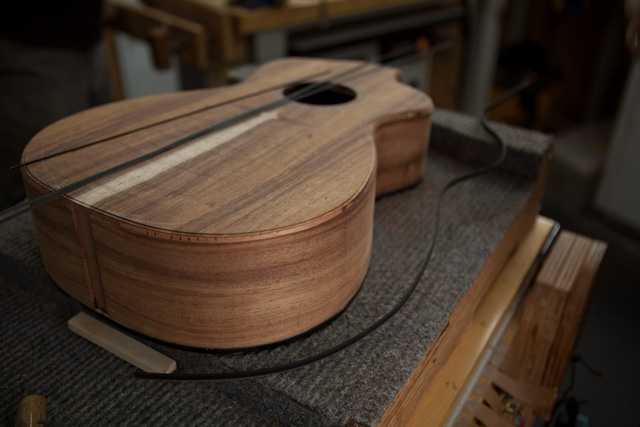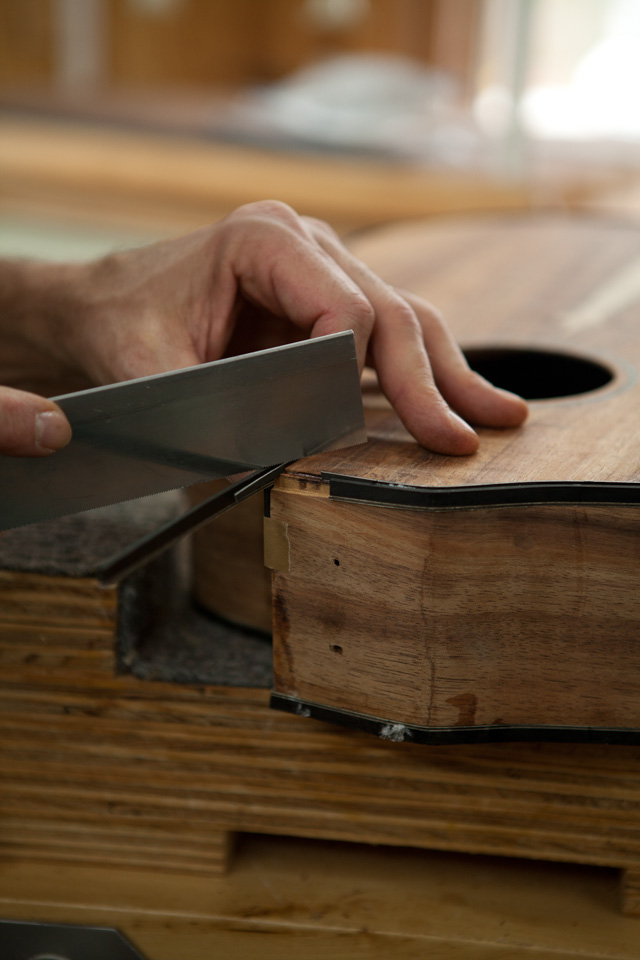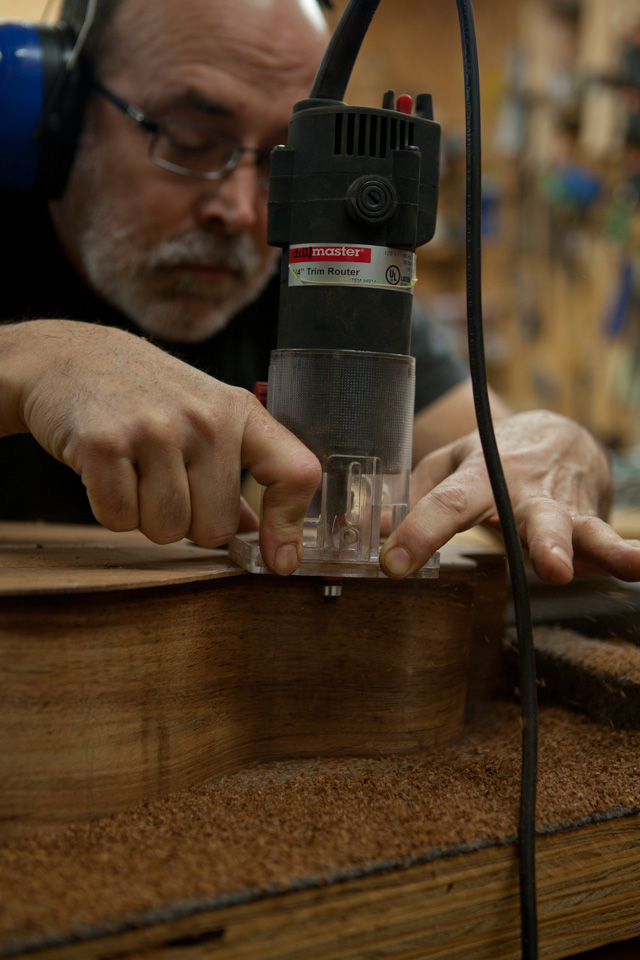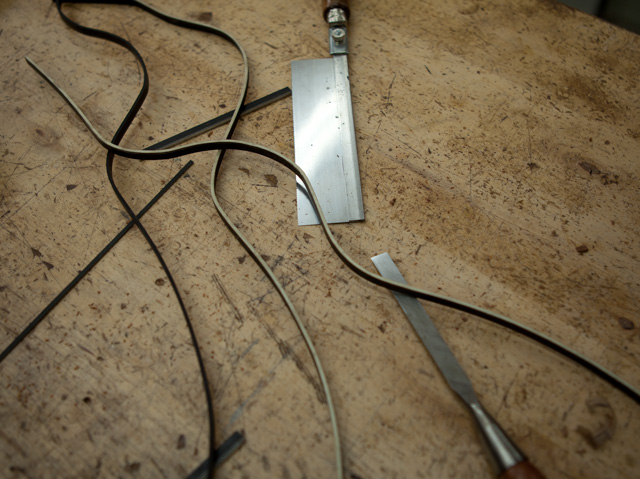I’ll admit to a few aches and pains due to standing over a luthier’s bench for 10 hours each day, but I’ve got what for a guy my age passes for a spring in his step when I head over to the shop this morning. We’re going to remove the “box” from the clamps and, provided I applied the glue well enough, I’ll hold in my hands something that resembles a guitar body. My first guitar!
Jay and Corrie arrive shortly before I do, but I’ve barely patience to exchange morning pleasantries. I start yanking the clamps off of the guitar body and Jay assists. … There it is. It does look like a guitar. My guitar. It’s a more moving experience than I expected. Jay and Corrie, though, anticipated the moment. Corrie offers the obvious but needed sentiment: “That’s your guitar. You made that.” “Yeah,” I reply, “but I mostly certainly could not have done this without Jay’s guidance.”
As today will prove beyond doubt, Jay has a preternatural ability to judge just the right amount of guidance that a student needs in any particular moment. He answers the question, “So, what’s the next step?” with a definitive response. The query, “How do we handle this?” merits a “Well, there are three options …” And when he senses that I’m up to the task both of executing the undertaking and deciding whether I’ve executed it well, he responds, “If you’re happy with what you’ve done, then we’ll glue it and move on to sanding.” He’s intentionally not judging my work and there’s nary a hint of cynicism in his response. From earlier steps in the build process and my efforts in the moment, Jay has figured that this is the time to remove the net, if only for this one step.
Our last task of the day illustrates perfectly the, well, perfect Jay Lichty pedagogy. We’re working on the end graft, that bit of decorative inlay at the back end of the guitar that serves as a dividing point where the sides meet. Jay has earlier shown me how to miter purflings, those lines that encircle and visually enliven a guitar’s physical features. “OK, now, miter these purflings and then shape the koa wedge that you’ve chosen to fit between the purfling lines. I happily miter the purflings and, I can immodesty write, they look near perfect. But, in shaping the koa wedge that will fit between them, I have difficulty shaping the piece of wood to the appropriate taper and by the time I’ve figured the taper, I’ve machined the piece of wood too narrow for the space it must occupy. It matches the taper of the neighboring purfling, but there’s a space, albeit a consistent space, between it and those decorative lines that are supposed to provide visual enhancement.
“You know,” says Jay, “sometimes a guitar tells you what it needs. Look at the guitar from over here. What do you see?” Well, first I see my inadequate craft, but then I see that the koa wedge is just far too plain. So I respond, “Well, that’s a shitty execution, but I also think that even if I had fit the piece properly, it would have looked boring.” “Exactly,” says Jay. “What would be better?” I reply, “An ebony wedge that matches the bindings.” Jay says he agrees, searches through a pile of ebony scraps, hands me a piece, tells me, “I’ve got to go check on something,” and leaves the shop.
Lessons learned, I take a raw scrap of ebony, taper it to the proper dimensions, cut it to length, and have it in place when Jay returns. “Looks awesome!” he says. And we glue it in place.
Jay and Corrie, who has returned to the shop to document my small, but important triumph, acknowledge my pride in completing the tiniest and most delicate of tasks in lutherie. A very small victory in craft can be a huge aesthetic and personal accomplishment.
This vignette symbolizes the day. Jay gives me just the degree of autonomy I can handle. The result is both one of the most satisfying and most efficient days I’ve experienced. I, with Jay’s calculated mentorship and occasional saving hand, sand the guitar body, decide on degree of top and back radiused thicknessing, and bind the guitar in delicate ebony bindings with whisker-thin abalone purflings that add sparkle and class.
And, I did it.
With Mr. Lichty’s extraordinary mentorship.
I ended yesterday’s account with the statement. “A better day I cannot imagine.” I no longer need to attempt to imagine that possibility. I just experienced it.
All photos by Corrie Woods.
Next stop: Day Four.
……….


Sounds like a guitar!

Gluing the bingings.

Jay marks instructions for routing binding channels.

Ready for bindings.

Some adjustments with chisel

Mitering purfling with Exacto knife.

Mitering the binding.

Getting the taper of the butt wedge just right.

Fitting the bindings.

Easy does it.

Ebony bindings awaiting gluing.

Back bindings being installed.


